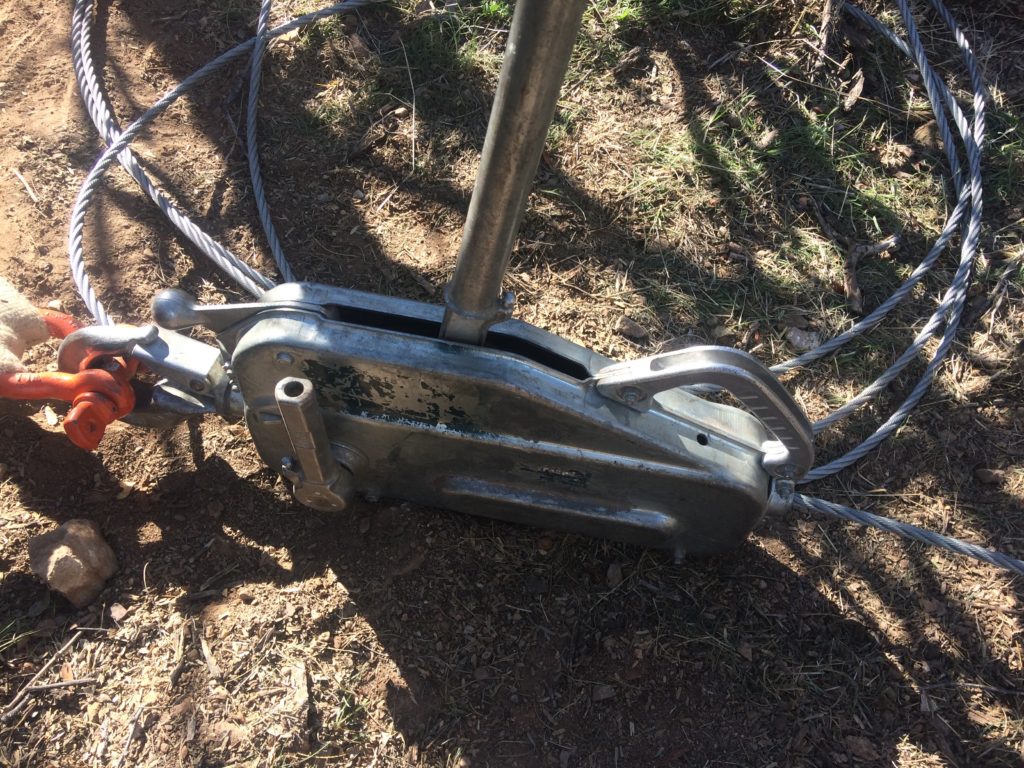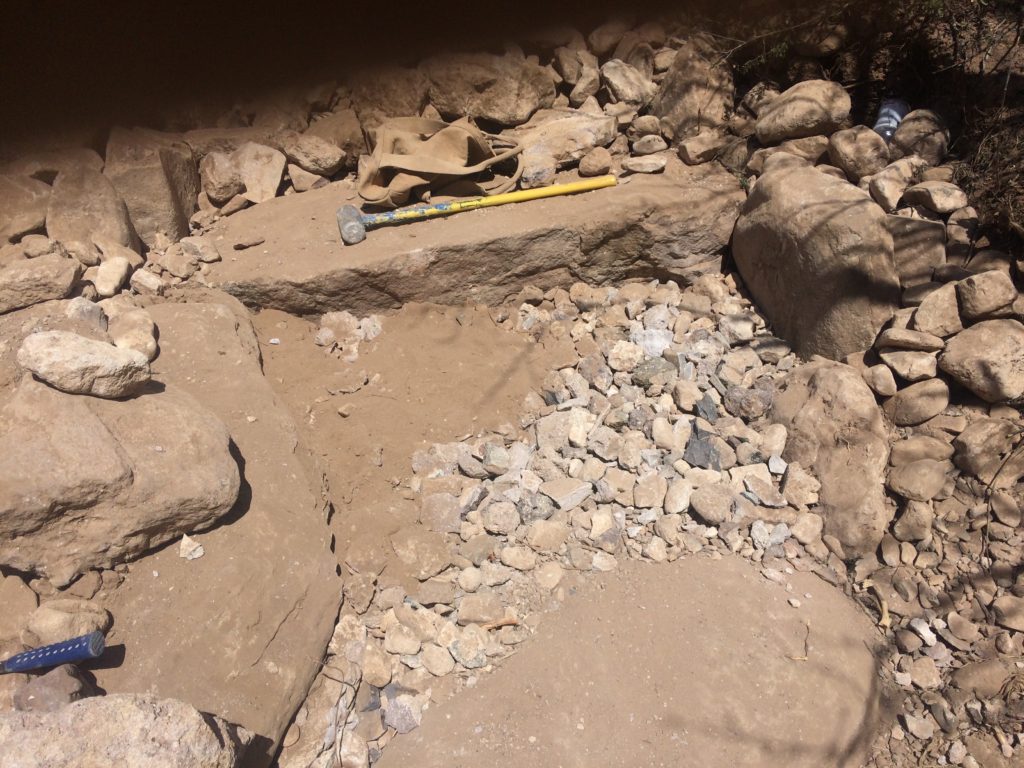
The trail has been a social trail for several decades, meaning no one ever designed it, it was simply so heavily used that you can see the path.

What this meant for us is that there were several reroutes to make, so we benched new trail and then naturalized the old social trail (covered it with large branches and cactus).
The reroutes / new trail were marked with flags. Reasons for rerouting from the old social trail might be to put it on higher ground or to have less steep of an incline, such that water won’t erode the trail as much and to make it easier on the horses.
Here’s what one reroute looked like before and after:


In other sections we would widen the tread of the existing trail (to three feet) and brush (=lopping nearby branches both on the sides of the trail and above it, such that there’s an appropriate corridor for horse riders).

To retain soil and prevent erosion we also had several rock projects going on along the trail each week, such as installing check steps and building staircases. While the first hitch I was mostly brushing (lopping) and sometimes widening tread, this past hitch I spent the week working on a staircase.

Our staircase will have seven or eight steps when it’s finished, gaining around eight inches of height each step. Since it will be used by horses, the step platforms are five feet deep.
We wanted the steps to be at least four feet wide, which meant we had to find a huge rock for each step, and then move it to the staircase.

We did this using a grip hoist, a magical tool which can pull two tons of weight:

Sometimes we’d have to first excavate around a potential rock to see how big it really was, if it had a nice flat surface on one side for a step, and if we could get a strap around it (for the grip hoist). Below you can see me excavating around a rock that we did end up using in our staircase.

Once we got a step set in the correct position (which can take a loong time…), we would crush it in (break down rocks with a single or double jack around it) and then set and crush in liners along the sides of the step.

Here we are, all crushing in different rocks:

When you’re done crushing in the space between one step and the next, you can then start to cover the crush with dirt/sand and tamp it down.

Here’s what the step looks like afterwards:

The four of us finished five steps during the work week, which we were proud of.

Here’s a peek at our tool cache at the end of the week, if you’re interested to see what sort of tools we were using.

Finally, a group picture on our steps:

It was really fun to construct a big rock structure on my final hitch, rather than doing the typical trail work I’d gotten used to throughout my months in ACE. I’m much more confident using a grip hoist now, as well as a double jack. It was a fantastic way to end my term with ACE!
